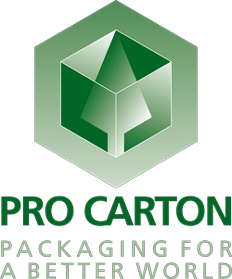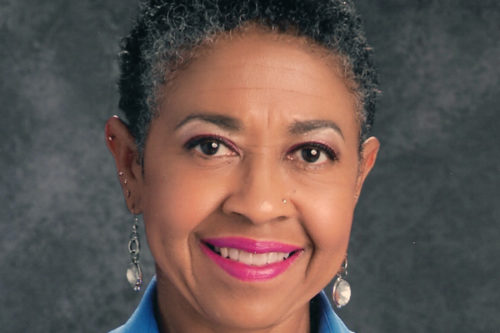The Future of Omni-Channel Packaging
2 July 2019
How is the digital world impacting on packaging? Pro Carton spoke with American brand expert and author Dr. Vickie VanHurley about this issue and her experiences. She believes that building a brand begins with the packaging, now more than ever before.
Q1. What is the difference between multi-channel and omni-channel in your definition?
Answer: The difference between multi-channel and omni-channel is multi-channel is selling across multiple physical and digital channels but operating separately with very little interaction between channels. Omni-channel joins the touchpoints or channels (bricks and mortar, website, mobile, social) together. Whatever journey the customer chooses to take, the experience is unified and consistent.
Q2. How do you apply the omni-channel-understanding to packaging?
Answer: Omni-channel is about branding, and I believe all branding begins with packaging. The packaging should create the brand. The brand packaging standards (typography, colours, photos, story) should be used in every channel. For example, the website should use the same typography, colors, photos and story that’s used on the packaging. A social media post should use the same photos used on the packaging, the same typography, the same colours and story. In other words, the packaging should look the same (or as close as is possible) in every channel. Retail companies discovered customers expect the packaging online to look like the physical packaging found in the stores. The retail companies also discovered the number one reason customers return items purchased online is the packaging didn’t resemble the packaging in the bricks and mortar stores.
Q3. Besides protection of the contents what’s the role of packaging?
Answer: I have a phrase I have been using for years: “packaging is the skin of commerce.” Packaging is considered “the silent salesman.” Packaging is also considered the “1st moment of truth”, the initial opportunity the customer has to experience a product (brand). The role of packaging is to inform and persuade the customer to purchase. The packaging is expected to define the quality and function of the product as well as the brand. In summary, the function of packaging is to build the relationship with the consumer.
Q4. Will packaging in the future be more or less important?
Answer: I believe packaging will be recognized as more important in the future. A shift in the importance of packaging has already occurred with shipping boxes as a result of e-commerce. Shipping boxes used to only contain the shipping label. Shipping boxes are designed, branded to stand out. The stylized shipping box is a prime example of omni-channel packaging. A few brands driving this revolution are Birchbox, Urban Outfitters, Net-a-Porter, Hello Fresh, Blue Apron, Pop Sugar and Bark Box.
Q5. What has changed for packaging through the internet?
Answer: From a supply perspective the internet has provided opportunities for global suppliers and materials. A simple internet (Google, Bing) search can provide numerous suppliers for packaging. Prior to the internet, options were reserved to a phone call to a local or regional supplier. The internet has also provided a plethora of research for creative solutions to packaging challenges.
Q6. What will change in the role and function of packaging in the future?
Answer: I was speaking with a colleague recently about packaging and the upcoming possibility of drone delivery. Packaging will have to operate as a shield for its contents. So, the future role of packaging will be to protect contents, command attention, build a relationship with customers, persuade the consumer to purchase and shield. The possibility of drone delivery raises the issue of developing a branded shipping box in addition to the product packaging. Also, packaging will have to pass more rigorous testing to ensure the product arrives with the customer in pristine condition.
Q7. How important will sustainability be in marketing communication?
Answer: Sustainability will be very important in marketing communication especially with millennials. Research has shown millennials live an eco-friendlier lifestyle than older generations and are more concerned about protecting the environment. However, the marketing communication must be evident. A few eco-friendly packaging attempts that failed have consisted of lighter weight materials that resulted in poor performance and customer experience. For example (in the U.S.), thin plastic water bottles that spill during the opening process because the pressure of holding the bottle pushes water out of the bottle also I’ve seen paperboard packaging destroyed because it doesn’t open properly because the adhesive is stronger than the paperboard. If the packaging doesn’t live up to the marketing communication claims this could wreak havoc with the brand and the customer relationship. Unfortunately, the United States lags behind with sustainability. One reason is due to the lack of education about sustainability and its importance to the environment.
Q8. How would you rank cartonboard packaging in relation to other materials?
Answer: From a design perspective I rank cartonboard highly. I enjoy the ability to brand the entire packaging. I appreciate the recent advances in printing on cartonboard with better colours, specialty printing (foil, embossing, textures) and registration. Other materials (metal, aluminum, molded plastic, polybag) often restrict the branding to a label or a two-dimensional design space. A label may not provide enough “real estate” to brand the packaging properly.
Q9. Are the world markets of packaging converging or are differences growing between, say USA, Europe, Asia?
Answer: I believe convergence is necessary due to global e-commerce especially regarding sustainability. Every country, every culture has a different perspective regarding the environment. It would send a poor branding message if packaging from a brand in the United States delivered a product in packaging that contradicts their environmental culture. Research has shown the attitude towards the packaging equals the attitude towards the brand.
Q10. Do you have any good examples of omni-channel packaging?
Answer: Yes, my current favourite example of omni-channel packaging is an American eyeglasses company, Warby Parker (www.warbyparker.com). In spite of beginning as an e-tailer, Warby Parker developed their brand with packaging. Each channel (e-commerce, brick and mortar, mobile) delivers the same experience.
www.bootstrap-branding.com




